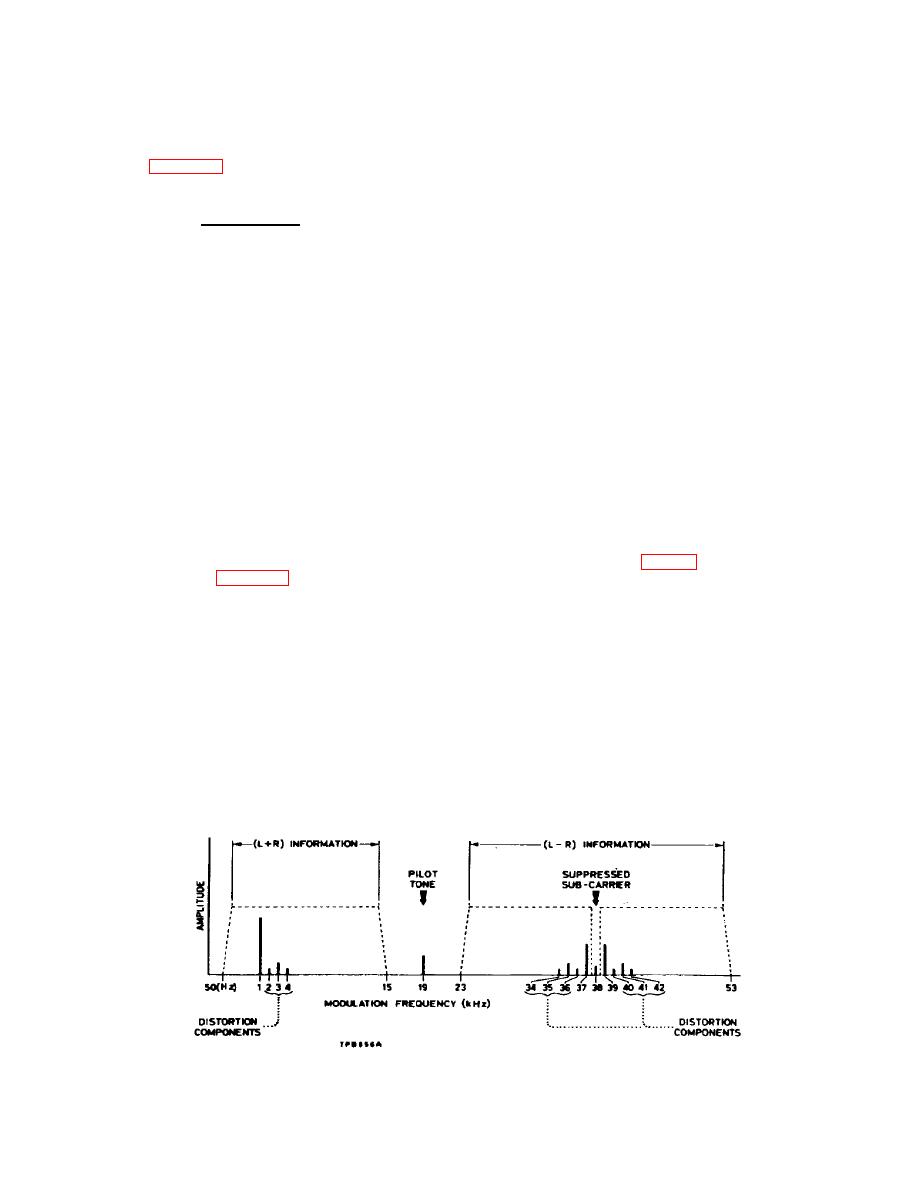 |
|||
|
|
|||
|
|
|||
| ||||||||||
|
|
 TM 11-6625-3017-14
Example : To find the fundamental crystal frequency for
Crystals are fully specified in Data Sheet
an r. f. input of 83.666 MHz:
Q01670F, to which reference should be made
for further details if required. Both data sheet
1) Consulting Table 2. 4, it can be seen that this r. f.
and crystals are available from The Marconi Co.
falls within range 4 and the harmonic factor is therefore
Ltd., Chelmsford, Essex.
2.
83.666+ 1.5
2.16
F.M. STEREO MEASUREMENTS
Crystal frequency =
2
= 42. 583 MHz
Distortion and channel separation in stereo
A +10% tolerance is permitted on the 1.5 MHz i.
systems which are designed to meet U. S. Federal
f. (+150 kHz) and, since the normal tolerance on
Communications Commission (F. C. C. ) requirements
crystal frequency for +20 C to +60 O C
can be measured with the TF 2300A Modulation Meter.
temperature operation is +0. 01%, a crystal with
The general procedures are described in the following
a frequency of 42.58 MHz and normal tolerance
sections.
should be suitable, and it is not usually necessary
to specify a tighter tolerance.
2.16.1 Harmonic distortion
Note: Where f.m. deviation approaches the full i.
It can be assumed that distortion introduced by
f. bandwidth and the r, f. approaches 1000 MHz ,
the modulation meter is small in comparison with that in
the crystal tolerance should be as close as
stereo transmitters, being typically better than 0.1% for
possible for minimum distortion and crystals with
deviations up to 75 kHz and therefore, for practical
tighter frequency limits (+6. 003%) should be
purposes, can be ignored.
specified.
The typical frequency spectrum of a G. E. -
In every case the crystal frequency selected
Zenith type of f.m. stereo signal when a 1 kHz test tone
should be such that the lowest possible harmonic factor
(for example) is applied to the left channel and no signal
gives the required operating frequency.
This is
to the right, is shown in Fig. 2-5.
automatically given by Table 2.4 using the procedure
described.
Ideally, only the fundamental 1 kHz signal in the
left + right (L + R) channel and the 37 and 39 kHz
Example : Required oscillator frequency is 176 MHz.
sidebands of the suppressed sub-carrier in the L - R
channel should be present.
In practice, however,
1) It can be seen that a crystal of 22 MHz
harmonic distortions will occur at 2, 3, 4 kHz in the L + R
operating with a harmonic factor of 8 will satisfy
channel and at 37 and 39, 36 and 40, 35 and 41 kHz . in
frequency conditions.
the L - R channel. These are the distortion components
which it is desired to measure.
2) However, a crystal of 44 MHz operating with a
harmonic factor of 4 should be specified for
maximum output from the oscillator
Fig. 2-5. Frequency spectrum of f.m. stereo signal with 1kHz modulating tone.
2-11
|
|
Privacy Statement - Press Release - Copyright Information. - Contact Us |